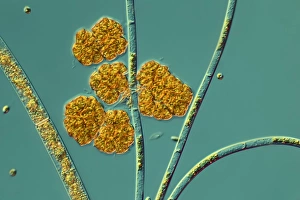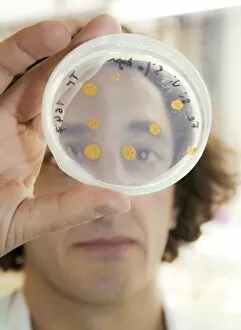Microalgae Collection
Microalgae, the tiny powerhouses of nature, have captivated researchers worldwide
All Professionally Made to Order for Quick Shipping
Microalgae, the tiny powerhouses of nature, have captivated researchers worldwide. Through light micrographs, scientists delve into the intricate world of these microscopic organisms. Extensive microalgae research has unraveled their potential in various fields. In Australia's mesmerizing pink salt lake, a unique phenomenon occurs where microalgae thrive abundantly. This vibrant hue is attributed to Dunaliella salina, a type that produces carotenoids responsible for its striking coloration. Researchers study this pink salt wonderland to unlock its secrets and harness its benefits. Dried algae samples collected from diverse habitats serve as valuable resources for further investigation. Scientists meticulously analyze these specimens to understand their composition and explore potential applications in medicine, nutrition, and biofuel production. To facilitate controlled growth conditions, photobioreactors provide an ideal environment for cultivating algae on a larger scale. These innovative systems allow researchers to optimize parameters such as light intensity and nutrient availability to maximize biomass production efficiently. Petri dishes adorned with flourishing green colonies showcase the versatility of algae growth patterns under controlled laboratory conditions. By manipulating variables like temperature and substrate concentration, scientists gain insights into how different species respond and adapt. Algae research continues to push boundaries by exploring their immense potential as sustainable alternatives in various industries. From biofuels that reduce carbon emissions to nutraceuticals rich in essential fatty acids and antioxidants – the possibilities seem boundless.











